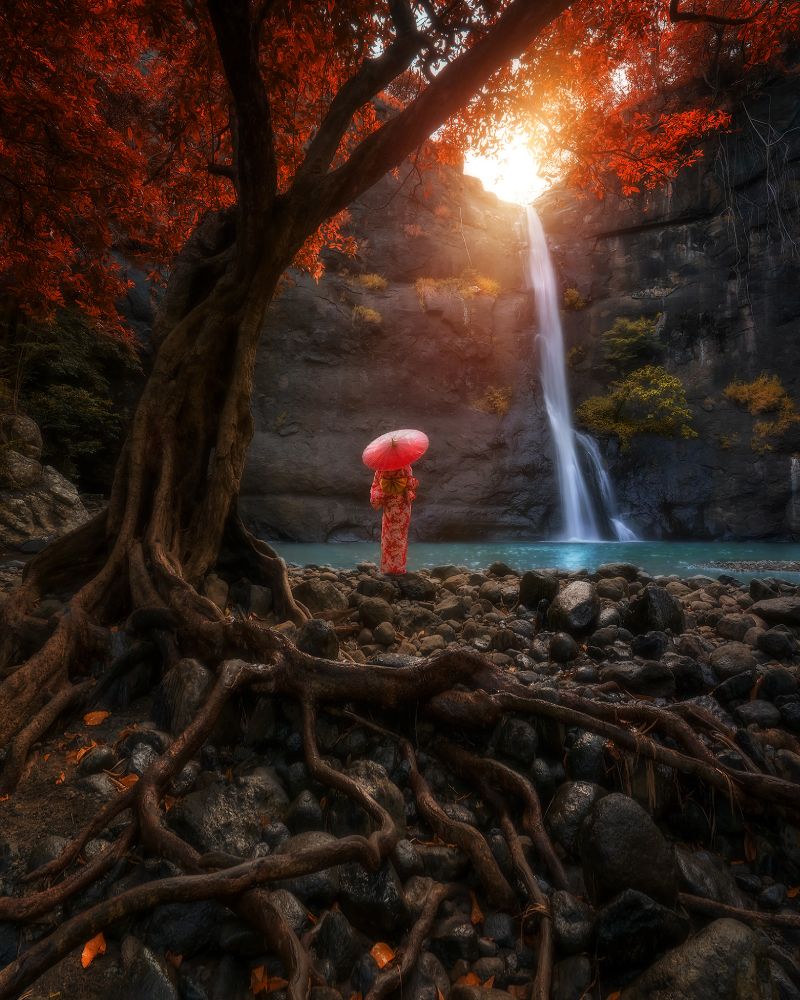Indonesia, with its diverse landscapes – from volcanic peaks and emerald rice terraces to pristine beaches and lush rainforests – is a photographer’s dream. However, capturing the beauty of these scenes effectively requires a solid understanding of landscape photography techniques.
Photo Trip Indonesia with Miwa Fajri shares these essential tips to help you master landscape photography in Indonesia:
Plan Your Trip:
- Research Locations: Before you embark on your Indonesian adventure, research locations that align with your photographic interests.
- Check Weather and Light: Understand the best times of day and year for optimal lighting conditions. Golden hour and blue hour can dramatically enhance your landscape images.
- Consider Seasonality: Different seasons offer unique photographic opportunities. For example, the rainy season might bring dramatic cloudscapes, while the dry season may provide clearer views of distant horizons.
Essential Gear:
- Sturdy Tripod: A stable tripod is crucial for long exposures and achieving sharp images, especially in low-light conditions.
- Wide-Angle Lens: A wide-angle lens helps capture expansive landscapes and dramatic perspectives.
- Neutral Density (ND) Filters: ND filters reduce the amount of light entering your lens, allowing for longer exposures, especially during bright daylight. This can be used to create silky smooth water effects or to capture the movement of clouds.
- Polarizing Filter: A polarizer can help reduce glare and reflections, enhancing the color saturation and contrast in your landscape images.
Compositional Techniques:
- Rule of Thirds: Divide your frame into nine equal parts with two horizontal and two vertical lines. Place key elements of your scene along these lines or at their intersections for a more dynamic composition.
- Leading Lines: Utilize natural elements such as roads, rivers, or fences to guide the viewer’s eye through the image.
- Framing: Use natural frames like tree branches, archways, or rock formations to draw attention to your main subject.
- Foreground Interest: Include interesting foreground elements such as rocks, flowers, or grasses to add depth and dimension to your landscape photographs.
Capturing Light:
- Golden Hour and Blue Hour: These transitional periods between day and night offer soft, warm light that can dramatically enhance your landscape photographs.
- Cloudy Conditions: Overcast skies can provide diffuse light, minimizing harsh shadows and creating a soft, even light on your subjects.
- Using Filters: Utilize ND filters to control exposure and create long exposures, especially during bright daylight.
Post-Processing:
- Enhance Colors: Carefully adjust colors and contrast in post-processing to enhance the mood and atmosphere of your landscape images.
- Reduce Noise: Minimize noise in your images, especially when shooting in low-light conditions or with high ISO settings.
- Sharpen Carefully: Sharpen your images selectively to enhance details without introducing unwanted artifacts.
- By incorporating these tips and techniques into your photography, you can capture stunning landscape images that truly reflect the beauty and diversity of Indonesia.


